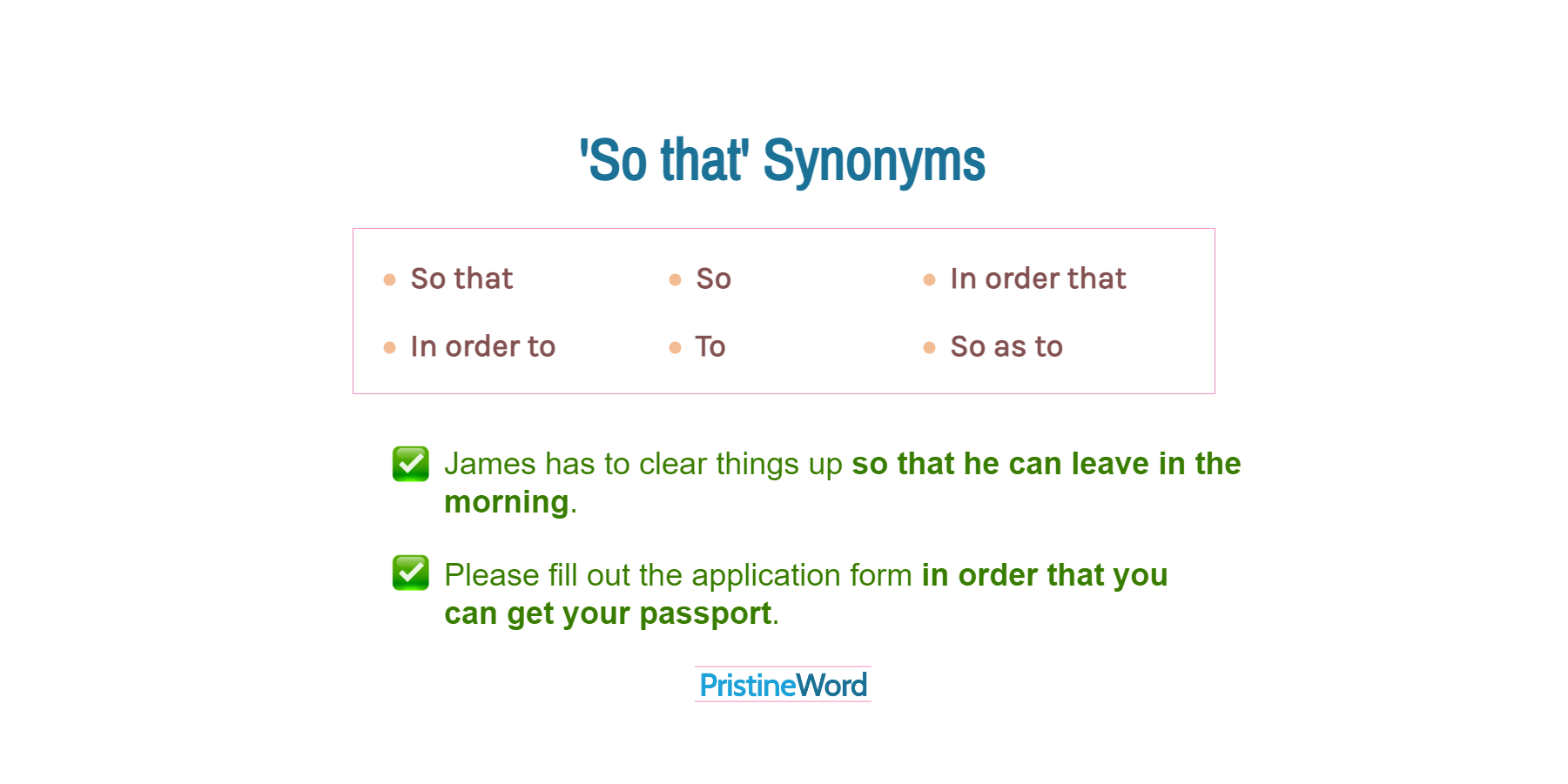You can use "so that", "so", or "in order that" to express purpose.
You can use the following subordinating conjunctions to express purpose:
- "so that"
- "so"
- "in order that"
Alternatively, you can rewrite your sentence by using a preposition followed by an infinitive to show purpose, such as:
- "in order to"
- "to"
- "so as to"
Instead of "so that", you can use one of these prepositions. They are prepositions that are typically followed by a gerund, not an infinitive, and are quite formal:
- With the intention of
- With the aim of
- With a view to
- For the purpose of
'So that', 'So', and 'In order that'
"So" can be used as a shortened, very informal version of "so that". Remember, "so that" is a subordinating conjunction, and therefore followed by a subject and a verb (a clause).
While "so" is only used in colloquial English, "so that" is quite common in both spoken and written English.
My father went back home early so he could enjoy a hot shower.
James has to clear things up so that he can leave in the morning.
"In order that" is more formal and less common than "so that". We don't normally use "in order that" in informal language.
Three different systems can share information in order that your business process can be completed.
You can start a sentence with "so that". Similarly, you can use "in order that" at the beginning of your sentence.
So that you can avoid unnecessary risks, you should conduct a market analysis.
In very informal situations, you can use "so" instead of "so that". In formal, neutral, and informal contexts, use "so that". Occasionally, in formal or academic writing, you can use "in order that".
Other Ways to express Purpose
As mentioned above, "so that", "so", and "in order that" are subordinating conjunctions; they are always followed by a clause (a subject and a verb).
Please fill out the application form so that you can get your passport.
However, when expressing purpose, we usually can rewrite a sentence to include a preposition, such as "in order to", "to", or "so as to". These are prepositions that have an infinitive as its object.
Please fill out the application form in order to get your passport.
Both "to" and "in order to" are equally possible in written and spoken English. In formal situations or academic writing, you can sporadically use "so as to". In negative sentences, use "in order not to" or "so as not to".

